LUMBERMENOnline.com’s Latest Industry News & Articles
Submit your company’s latest news or articleWASHINGTON – American Wood Council (AWC) President and CEO Robert Glowinski has issued the following statement regarding the letter ?154 members of the U.S. House of Representatives sent to the U.S. Department of Agriculture, Department of Energy and Environmental Protection Agency urging the recognition of the carbon neutrality of biomass energy.
The letter can be found here: http://awc.org/docs/default-source/letters/house-letter-on-carbon-neutrality-of-forest-biomass.pdf
“The carbon life cycle of wood products is well known and recognized. Our industry produces almost 80 percent of its own energy through the use of biomass residuals, displacing the need for fossil fuel use. These congressmen and women have now joined senators and scientists in supporting the use of biomass energy from manufacturing residuals as being fully sustainable. It is important for both our industry and national energy policy that the federal government clearly recognizes the carbon neutrality of biomass energy derived from sustainable forestry and our industry’s manufacturing residuals.
“We thank all of the letter’s supporters and, in particular, Representatives Ribble, Bishop, Poliquin, Schrader, Harper and Graham for leading the effort.”
JACKSONVILLE, ILLINOIS (June 1, 2015) – PRS Group, Inc., based in Illinois, and Spain based CAPE have entered into a partnership that will bring new technology and machinery to the pallet industries in North America and Europe, as well as other key areas around the globe. PRS Group, a widely known US manufacturer of pallet repair equipment, and CAPE, a leading European pallet nailing machinery manufacturer, are now representing each other’s complimentary product lines in their designated markets. The pair will also be collaborating on future projects to offer a complete line of both pallet manufacturing and recycling equipment worldwide.
Starting in June, PRS Group will begin offering for the first time in the US, the CAPE nailing machine, which has already developed a strong reputation in Europe for its efficiency, flexibility and scalability at a very competitive cost. The initial focus will be the CAPE Mach 2, an automatic nailing line with quick change over for the production of decks, skids and 2-way reversible pallets. It is designed to produce stringer pallets and can be upgraded easily by adding a module to produce block pallets. The Mach 2 is known for its quick changeover between designs and can produce around 2,500 pallets in an eight-hour shift.
Jeff Williams, president of PRS Group stated, “The Mach series features quick 30 minute or less changeovers with touchscreen controls; no wrenches or manual adjustments are required. The unique thing about the Mach line is that the systems are modular. This allows the production line to grow with the company’s needs, without requiring the purchase of a brand new system. Through increased output and lowered costs, the machine can pay for itself within the first year of use.”
PRS Group will stock necessary parts and have a specially trained technician available for service in the U.S. If you want to see the Mach 2 in action, PRS Group will have a CAPE nailing line running in its Illinois showroom later this summer.
The two companies will remain independently operated, but the collaborative product offering agreement between the two will enhance each one’s ability to better serve their respective customers and to continue to provide the exceptional quality and service they have built their reputations on over the years. The partnership truly means a turnkey offering of solutions for the worldwide pallet industry.
The new Titan Trommel Screen from West Salem Machinery (WSM) is an ultra-heavy duty rotary
drum screen specifically designed and manufactured for severe duty screening applications requiring high throughput and reliable long term operation. Available with drum sizes of 6 ft., 8 ft., and 10 ft. diameter with lengths from 25 ft. to 63 ft. long, the Titan Trommel is a “revolution” in trommel design and construction – with design features and build quality that deliver unsurpassed performance and reliable long term operation.
What makes the WSM Titan Trommel different? Precision manufactured trunnion rings with heavy
duty raised steel rings that are machined and include integrated lifter attachments – providing superior
drum integrity and concentricity; massive steel support frame with machined mounting pads and laser-
aligned trunnion wheel mounts – allowing long drum lengths with consistent distribution of loading;
modular and interchangeable dual trunnion wheel mounts with self-adjusting pivot point – to handle shock loading and allow for easy access and maintenance; simple modular cleaning brushes with external adjustment – for improved screening efficiency; and modular screen design for use of wire mesh or perforated plate screens – allowing multiple screening zones and quick screen changes.
The list goes on – the WSM Titan Trommel is truly a “revolution” in trommel design and construction and we invite you to learn more at www.westsalem.com, contact WSM directly at 800 722 3530, or by email to info@westsalem.com and talk to one of our application specialist about your specific screening needs.
WASHINGTON – American Wood Council (AWC) President and CEO Robert Glowinski has issued the following statement regarding the letter 46 senators sent to the U.S. Department of Agriculture, Department of Energy and Environmental Protection Agency urging the agencies to recognize the carbon neutrality of biomass energy.
The letter can be found here: http://www.awc.org/pdf/environmentalreg/BiomassLetter-EPA-USDA-DOE-150630.pdf
“These senators have called for clear policies recognizing the carbon neutrality of biomass energy derived from sustainable forestry. It’s crucial for agencies to be consistent on biomass energy so their policies are workable in practice.
“AWC member companies generate almost 80 percent of the energy they use from renewable biomass, most in the form of residuals from manufacturing and operations. We thank all of the letter’s supporters and, in particular, Senators Collins and Merkley for leading the effort.”
# # #
The American Wood Council (AWC) is the voice of North American wood products manufacturing, representing over 75 percent of an industry that provides approximately 400,000 men and women with family-wage jobs. AWC members make products that are essential to everyday life from a renewable resource that absorbs and sequesters carbon. Staff experts develop state-of-the-art engineering data, technology, and standards for wood products to assure their safe and efficient design, as well as provide information on wood design, green building, and environmental regulations. AWC also advocates for balanced government policies that affect wood products.
www.awc.org | @woodcouncil
In my humble opinion anytime the government says, “I’m here to help” you should be concerned. As a former sawmiller and logger, after reading the entire program, I do not believe this is a good program for the hardwood industry and it will not accomplish its stated goals. The program, like every government program, has page after page of confusing regulations, makes unreasonable demands upon all hardwood producers, plus the exemptions and “opt out” options are full of regulatory requirements and fees that are nothing more than a hidden tax.
I encourage all hardwood producers, regardless of your side of this debate, to comment on the Federal Register website and visit www.nohardwoodcheckoff.com for more information. Don’t wait, the comment period closes on July 9th.
Below are some parts of the “new order” that are worse than the original that I recently received from a local hardwood producer from NHLA.
Brady Carr
Publisher
LUMBERMEN’S Equipment Digest
The new order is vastly more complicated than previous because it provides so many exemptions from qualified sales, e.g.
For purposes of this Order, hardwood lumber does not include industrial products which remain in board or block form such as ties, cants, crane mat material, and pallet stock or products which are transformed from boards or blocks of lumber into other products such as furniture, tight cooperage, cabinetry, and constructed pallets
But as the Federal Register also says: exempt manufacturers would still be required to keep records. By providing various other exemptions the new proposals further complicates the $2 million exemption. Now producers near that threshold will have to keep track of sales by category and customer on a separate set of books that would be submitted to the Hardwood Checkoff Board to determine the amount of assessment that company would pay, or whether it would be exempt with revenues under $2 million. The Checkoff set of books would have nothing to do with annual profits, losses or taxes – it would just be another regulatory burden and accounting exercise that cost companies money.
Because of this extra recordkeeping burden which will be particularly cumbersome and costly for small business – they should be granted a vote in the initial referendum with or without having to pay assessments under the program. This equitable given a company may one year have $2 million in revenues from qualified products, and the very next year may not.
The new order exempts industrials, which is 60 percent of hardwood utilization. That is on top of exempting all companies under $2 million in revenue from voting or participating in the check-off. That is more than half of all hardwood lumber manufacturers. With 60% percent of the product volume and 50% of the producer based exempted, how is the check-off to benefit the industry?
USDA does not explain why it dropped industrials from the checkoff, and could not decide on whether to keep plywood – an obvious competing product to hardwood lumber. This is an obvious failure of AMS to provide a balanced analysis and assessment of the industry and demonstrates AMS lacks the insight to proceed with this checkoff plan.
By exempting many products, the Checkoff will promote certain hardwood products over others. This could create an imbalance in the timber supply and negatively impact those exempted. This does not benefit the industry overall.
While the referendum issue is addressed by making the voting threshold a majority of both companies and a majority of volume, the referendum process still exempts more the half the industry and is thus still skewed toward large companies. According to the USDA in the Federal Register, those companies with less than $2 million in annual sales comprise 52 percent of the industry. How can an industry impose a checkoff exempting more than half that industry?
This proposed checkoff is so very different than the original proposal (exports included versus excluded in the original, so many products excluded, that this proposal should be sent back to the industry to consider before moving on as an AMS imposed plan.
The checkoff excludes brokered sales. All manufactures could engage brokers and avoid all assessments. That is not the intent of a promotion and research order.
Comments on the "revised" Hardwood Check-Off are accepted until July 9. NHLA encourages everyone to share their opinions on this matter. Comments can be submitted online at: http://www.regulations.gov.
Hutto Wood Products, an industry leading shaving mill manufacturer, releases their HU448-10 Wood Shaver. The mill features (4) 10 knife heads, (4) 50 horsepower motors along with one 30 horsepower motor that comes fully wired and turnkey ready. While the HU448-10 comes standard and ready, selecting a stationary or movable box (6', 8' or 9') will help fit your needs. More standard attributes include the 24' x 30" conveyor and a 100 gallon reservoir allows the mill to boast 40-60 yards per hour of production. When asked, "what are customers going to like most about this mill?" Patrick, owner of Hutto Wood Products answered quickly, "value and price."
To find out more about the HU448-10 and other equipment from Hutto Wood Products, call 803-317-3129 or visit www.HWPshavers.com.
The Occupational Safety and Health Administration (OSHA) has issued more realistic guidance to field inspectors looking at accumulations of wood dust. The new guidance provides explicit instruction on how to address dusts, such as wood, with bulk densities of less than 75 lb/ft3.
OSHA also acknowledges in the guidance that "very low bulk density materials…may not create a deflagration hazard even at an accumulation level of ¼ inch…" or more, depending on the bulk density and other attributes of the dust.
AWC is pleased that OSHA has decided to consider the true bulk density of a dust in order to assess safe limits for accumulation. For comparison, OSHA's web-based reference provides a bulk density for wood shavings as 8 lb/ft3, with a maximum of 16 lb/ft3, or approximately one-ninth of what they had been using for wood.
Going forward, instead of relying on a 1/32 inch maximum accumulation criterion, OSHA inspectors are now being asked to calculate a maximum safe accumulation layer, specifically taking into account bulk density for the particular material. In situations involving very low bulk density dusts, inspectors can now also send dust samples collected to a laboratory for a density determination where the material is very light; the layer thickness is greater than ¼ inch and not more than one inch; and, the accumulation extends over 5 percent of the floor area of a room or a building or 1000 ft2, whichever is less.
With a total of 2,206 attendees and exhibitors registered, Expo 2015 – the 33rd Forest Products Machinery & Equipment Exposition conducted by the Southern Forest Products Association (SFPA) – was a resounding success. For three days – June 10-12 – displays of 188 exhibitors covered more than 54,000 square feet of the Georgia World Congress Center in Atlanta. Featuring a floor plan that was 45% larger than the 2013 event and total attendance up 18%, the wood industry was ready to show off the latest equipment, technology and services available.
“With our industry in full recovery mode, people came to Expo 2015 with a mindset to invest in their operations,” noted SFPA’s exposition director Eric Gee. “Exhibitors met with a quality crowd, including company representatives ready to purchase new equipment and services from industry leaders,” he added.
Exhibitors were impressed with the quality crowd attending all three days of the show. “Our sales team stayed busy all three days. I’m glad we booked a larger space this year to show off more equipment,” said one exhibitor. “The quality contacts we wanted are here,” commented another exhibitor.
For the first time, Expo 2015 co-located with the Forest Products Society’s 69th International Convention. Its INNOTECH program brought an educational element to the show, providing a full day of presentations devoted to safety, project planning and mill upgrades.
The Forest Products Machinery & Equipment Exposition has been sponsored since 1950 by the Southern Forest Products Association (SFPA), a trade association representing Southern Pine lumber manufacturers from Virginia, North Carolina, South Carolina, Georgia, Florida, Alabama, Mississippi, Louisiana, Arkansas, Oklahoma and Texas.
SFPA’s member companies produce about 45 percent of the nation’s Southern Pine lumber.
Thanks to the NHLA for working to keep the hardwood lumber industry informed. This update was received today.
Dear NHLA Members and Hardwood Industry Friends,
As previously announced, the "REVISED" Hardwood Lumber and Hardwood Plywood Promotion, Research and Information Order (Hardwood Check-Off) has been released by the US Department of Agriculture. Although extensive in detail with minor clarifications, the new Order has two changes that are a significant from the original.
Background:
In June 2011, USDA received a proposal for a national research and promotion program for hardwood lumber and hardwood plywood from the Blue Ribbon Committee (BRC). The BRC is a committee of 14 hardwood lumber and hardwood plywood industry representatives. The BRC proposed a program that would be financed by an assessment on hardwood lumber and hardwood plywood manufacturers and administered by a board of industry members selected by the Secretary of Agriculture. The purpose of the program would be to strengthen the position of hardwood lumber and hardwood plywood in the marketplace and maintain and expand markets for hardwood lumber and hardwood plywood. A total of 939 comments were received in response to the original proposed order. In response the USDA has submitted a "revised" Order now open for comment.
Two Significant Changes:
After a staff review of the 46 pages included in the revised Order, two changes from the original Order will have significant impact to the Order.
1. The definition of "Hardwood Lumber Products" has been changed to mean Green/Air Dried/Kiln Dried lumber that has been transformed into products that remain boards meeting or exceeding the level of "Grade 3ACommon" as defined by National Hardwood Lumber Association Rules for the Inspection of Hardwood & Cypress effective January 1, 2015 or equivalent proprietary standard. As such, hardwood lumber would not include industrial products which remain in board or block form such as ties, cants, crane mat material and pallet stock.
2. USDA will now require approval by a majority of manufacturers voting in the referendum who also represent a majority of the volume represented in the referendum. Only manufacturers who would be paying an assessment under the program would be eligible to vote. (Note: We asked USDA for clarification on this and were told there would be none until after the comments)
Additionally, the Revised Order clarifies some definitions, and restates that lumber to be exported is included. It also clarified that the species Yellow Poplar (Tulipwood) was to be included, and that Air Dried lumber is to be treated equal to Kiln Dried lumber.
Proposed Action for the Hardwood Lumber Industry:
Please take time to comment at the link below. In addition to your general comments, the USDA is reaching out to the industry to get answers on very specific questions regarding the programs viability.
Regarding Hardwood Plywood:
What are the benefits and the drawbacks for including hardwood lumber and hardwood plywood together in the same research and promotion program?
How would the proposed program benefit the hardwood plywood sector of the industry?
What types of promotion programs could be envisioned by the industry for hardwood plywood and how would this impact the hardwood lumber sector of the industry?
What impact would excluding hardwood plywood have on the expected amount of assessments to be collected under the proposed program?
What impact would excluding hardwood plywood have on the proposed Board structure?
Regarding Assessments:
Should the assessment computation be revised? If so, how should it be revised and what would be the impact on the projected amount of assessments to be collected under the proposed program?
Should the proposed rates of assessment on any of the four types of covered hardwood be revised? If so, to what level and what would be the impact on the projected amount of assessments to be collected under the proposed program?
Reminder - the comment period is now open and will close on July 9!
Submit comments online at: http://www.regulations.gov or faxed to 201-205-2800 or to the Promotion and Economics Division, Fruit and Vegetable Program, AMS, USDA, 1400 Independence Avenue, SW., Room 1406-S, Stop 0244, Washington, DC 20250-0244. All comments should reference the document number and the date and page number of this issue of the Federal Register.
NHLA will continue to follow other changes or clarifications and bring those to the industry.
FOR FURTHER INFORMATION CONTACT: Patricia A. Petrella, Marketing Specialist, Promotion and Economics Division, Fruit and Vegetable Program, by phone at 301-334-2891; fax at 301-334-2896; or email at Patricia.Petrella@ams.usda.gov.
American Wood Council (AWC) President and CEO Robert Glowinski has issued the following statement regarding the final issuance of U.S. Department of Agriculture (USDA) BioPreferred Program regulations today. The 2014 Farm Bill states that forest products, previously considered to be ineligible because they were "mature market," are now eligible products to be recognized in USDA biobased programs.
"Wood products are by their very nature biobased. The USDA BioPreferred Program now officially recognizes the innovative nature of wood products in the market today, including recognition of third-party verified Environmental Product Declarations.
"EPDs are the nutrition labels of the building products. Designers, builders and consumers now have science-based tools to determine the environmental impacts of a material. Wood products will often be found to have a smaller environmental impact because they are renewable, have lower emissions and embodied energy, are manufactured using a majority of biomass for energy needs and provide long-term storage of carbon."
The American Wood Council (AWC) has released a series of updated easy-to-use Guides to Wood Construction in High Wind Areas. The guides can be found on the AWC website: http://www.awc.org/standards/wfcm/2012.php.
The guides, based on provisions contained in AWC's 2012 Wood Frame Construction Manual (WFCM), establish a specific set of prescriptive, wind-resistive structural requirements for wood-frame buildings of sizes and shapes specified in the "Applicability" section of each. The provisions of the guides, developed specifically for builders, are directed toward ensuring structural integrity for resisting wind loads.
The 2012 WFCM is the referenced document for high-wind wood-frame construction in the International Building Code (IBC). Use of the high-wind provisions of these WFCM Guides therefore results in design solutions that prescriptively meet the requirements of the WFCM, IRC and IBC, where applicable.
"While wind load requirements may vary from jurisdiction to jurisdiction, national standards recognize that wood buildings can be designed to effectively resist these forces," AWC Vice President of Engineering Bradford Douglas said. "About half of the states in the United States have adopted the 2012 International Residential Code, which means the 2012 WFCM and these guides are accepted in those states."
Separate documents address wind design requirements for 115-, 120-, 130-, 140-, 150- and 160-miles-per-hour (Exposures B and C) wind zones. Areas vulnerable to hurricanes include the U.S. Atlantic and Gulf of Mexico coasts where basic design wind speeds are greater than 115 mph.
The 2012 Guides are comparable to earlier versions based on the 2001 WFCM which have been widely distributed and used along the Atlantic and Gulf Coasts. However, wind load provisions changed in the building-code-referenced 2010 edition of Minimum Design Loads for Buildings and Other Structures (ASCE/SEI 7-10) and the 2012 WFCM has incorporated those changes.
Other wind speeds and exposures not addressed in the guides are covered in the 2012 WFCM.
WASHINGTON – American Forest & Paper Association (AF&PA) President and CEO Donna Harman and American Wood Council (AWC) President and CEO Robert Glowinski have issued the following statements supporting today’s passage of a bill (SB 752) by the Oregon Legislative Assembly to conditionally exempt carbon dioxide (CO2) emissions from biomass from state air pollution regulations.
Donna Harman, President and CEO, AF&PA:
“Oregon has long recognized biomass energy as renewable and carbon neutral, a policy that has worked well in supporting both forest health and the state’s rural economy. We thank Senators Chris Edwards and Tim Knopp for leading this legislation.”
Robert Glowinski, President and CEO, AWC:
“The net impact of this carbon cycle is that CO2 flows in and out of forests and through the forest products industry by both biomass combustion and sequestration in products. The carbon neutrality of energy from biomass harvested from sustainably managed forests has been repeatedly recognized by an abundance of studies and is accepted by agencies, institutions, regulations and legislation. This bill will reinstate and codify Oregon’s carbon neutrality policy.”
# # #
About AF&PA
The American Forest & Paper Association (AF&PA) serves to advance a sustainable U.S. pulp, paper, packaging, and wood products manufacturing industry through fact-based public policy and marketplace advocacy. AF&PA member companies make products essential for everyday life from renewable and recyclable resources and are committed to continuous improvement through the industry’s sustainability initiative - Better Practices, Better Planet 2020. The forest products industry accounts for approximately 4 percent of the total U.S. manufacturing GDP, manufactures over $200 billion in products annually, and employs approximately 900,000 men and women. The industry meets a payroll of approximately $50 billion annually and is among the top 10 manufacturing sector employers in 47 states. Visit AF&PA online at www.afandpa.org or follow us on Twitter @ForestandPaper.
About AWC
The American Wood Council (AWC) is the voice of North American wood products manufacturing, representing over 75 percent of an industry that provides approximately 400,000 men and women with family-wage jobs. AWC members make products that are essential to everyday life from a renewable resource that absorbs and sequesters carbon. Staff experts develop state-of-the-art engineering data, technology, and standards for wood products to assure their safe and efficient design, as well as provide information on wood design, green building, and environmental regulations. AWC also advocates for balanced government policies that affect wood products.
www.awc.org | @woodcouncil

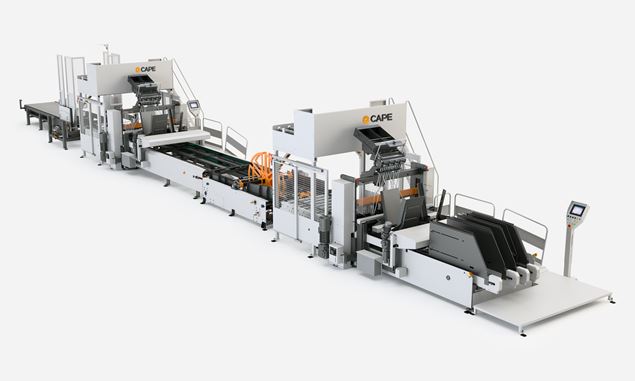
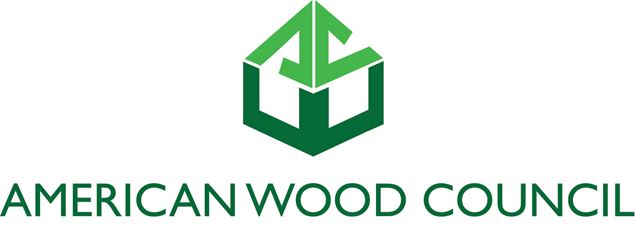


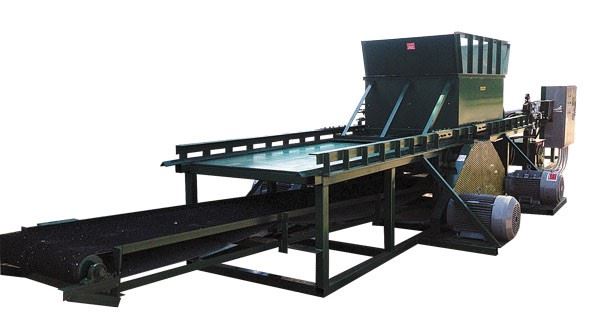

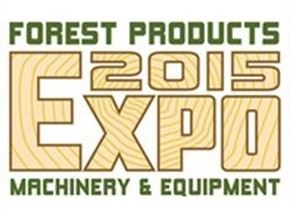









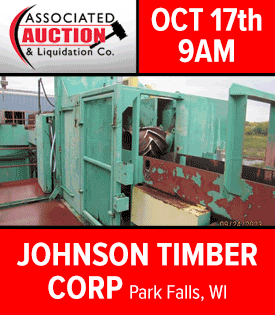

.gif)